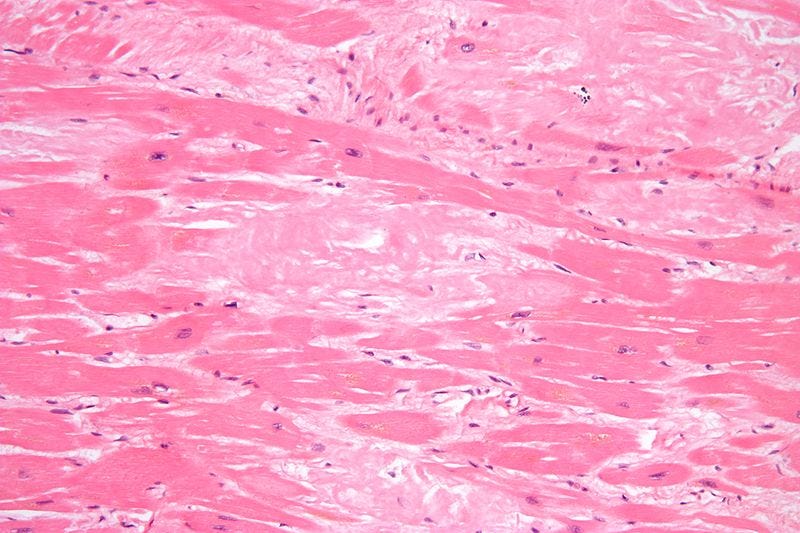Exploring CRISPR: A Revolutionary Approach to Genetic Diseases
Written on
Chapter 1: Understanding CRISPR's Impact
Recent findings indicate that a single application of CRISPR technology may offer a new hope for treating progressive genetic disorders. Preliminary results reveal a potential breakthrough in medical treatments.
This paragraph will result in an indented block of text, typically used for quoting other text.
Section 1.1: The Nature of Transthyretin Amyloidosis
Transthyretin amyloidosis is a rare genetic condition characterized by the accumulation of malformed proteins in both nerve cells and the heart. Researchers utilized a revolutionary technique involving molecular scissors to excise the genetic flaw responsible for this condition. In an initial human trial, this approach led to a significant decrease in protein buildup.
The TTR gene mutation produces an abnormal protein in the liver, which subsequently spreads throughout the body, resulting in sensory issues and cardiac complications. While various treatments exist to manage symptoms, a definitive cure has yet to be found. Fortunately, the exact gene implicated in this disorder is known, as illustrated in the biopsy image of heart tissue below, where the central pink mass represents amyloid deposits.

Section 1.2: CRISPR-Cas9: A Brief Overview
Advancements in molecular biology have enabled scientists to hone in on the TTR gene using a tool called CRISPR-Cas9. Originally discovered in bacteria, this technology has been adapted for application in other organisms and cell types.
During the study, CRISPR-Cas9 was injected into patients, resulting in a reduction of TTR production by over 80%. Notably, this marks the first instance of administering this system directly into the bloodstream, potentially paving the way for a groundbreaking therapy for transthyretin amyloidosis.
For a quick visual explanation, you can view the video below.
Section 1.3: The Journey to the Liver
One of the primary hurdles in developing new medications is ensuring they reach their intended targets. Fortunately, the liver naturally filters blood, making it an accessible target for treatment.
Researchers devised a method where lipid molecules were loaded with mRNA encoding the Cas9 protein, essentially providing the necessary instructions to create the molecular scissors. Additionally, the fat molecules carried RNA that directs the Cas9 to the TTR gene.
Four weeks after a single high-dose injection, participants exhibited a remarkable 80% to 96% reduction in TTR levels. This outcome is comparable to existing treatments for the condition, but the advantage of CRISPR-Cas9 lies in its potential to eliminate the need for daily medication.
Julian Gilmore from University College London led the clinical trial, which was published in The New England Journal of Medicine. The trial involved injecting the treatment into four men and two women, with impressive results observed shortly after.
Section 1.4: Implications and Future Directions
Jennifer Doudna emphasized the importance of this research, describing it as "a critical first step in being able to inactivate, repair, or replace any gene that causes disease, anywhere in the body."
CRISPR-Cas9 holds the potential to transform the landscape of genetic editing, offering a few injections as a remedy for numerous rare genetic disorders. The system's guiding RNA can be reconfigured to target various genes, eliminating the need for developing new drugs from scratch.
Future clinical investigations will focus on the precision of these molecular scissors and their potential side effects. This biotechnology may lead to affordable treatments for a range of genetic diseases, with ongoing research exploring possibilities such as gene activation or insertion of new DNA sequences.
Chapter 2: Ethical Considerations and Future Research
The first video titled "CRISPR and Genome Editing: Treating Human Disease and Ethical Considerations" delves into the ethical implications and potential of CRISPR technology in treating genetic disorders.
The second video titled "[Webinar] A Closer Look at the Potential of CRISPR/Cas9 in Duchenne - December 2016" provides insights into the application of CRISPR in specific genetic conditions, highlighting its transformative potential.
As a neuroscientist and science communicator, I invite you to engage further with my work. If you're interested in my insights, consider subscribing to my Substack or supporting my efforts on Ko-Fi. For inquiries or consultations, feel free to reach out.